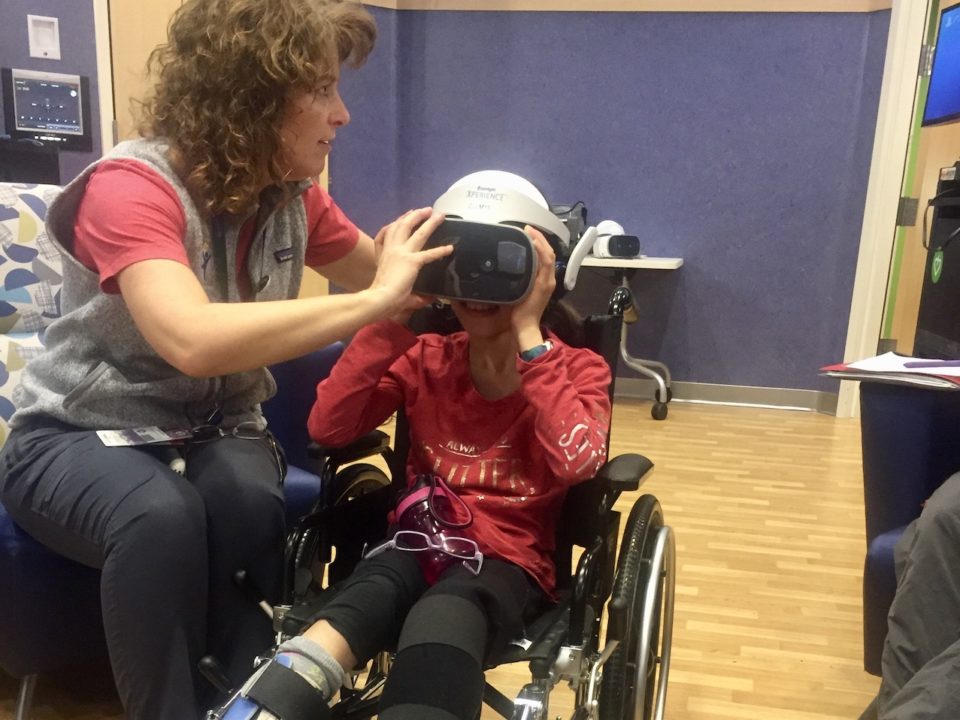The door to the Tween Zone opens as 10-year-old Zoe Johnson, a cerebral palsy patient at Children’s Hospital Colorado, wheels into the room. Dr. Joe Albietz, a pediatric intensivist at Children’s Colorado, greets her and places a virtual reality (VR) headset on the young girl’s head. Zoe’s father stands by her side, skeptical she’ll take a liking to VR—she’s never been interested in standard video games, he says. To everyone’s surprise, a smile quickly spreads across Zoe’s face as she gets to work catching fish out of thin air.
VR technology has been around for more than 20 years but until recently, it was prohibitive to the masses due to its price point, with devices in the early 2000s running $20,000-$40,000. Although prices decreased as the technology became commercialized in recent years, few medical professionals were taking advantage of its ability to improve patient care, until now.

After seeing VR increase in popularity and decrease in price, Albietz, a self-described gaming nerd, approached the director of child life at Children’s Colorado about getting VR technology in the hands of their patients. It took some convincing, but three years later, Albietz is now co-leading the hospital’s extra-reality program, which brings this exciting new technology to pint-size patients, with the help of Starlight Technology and Child’s Play.
Through VR technology at Children’s Colorado, kids experience everything from fishing to a game similar to Dance Dance Revolution, where you hit beats as music plays along.
“I like that I can be in the ocean without having to be there,” says Zoe. There are other experiences that are more meditative and others that are experiential, where users can explore the Mayan ruins, Italy, and other destinations. For now, the technology is only being used on patients six years old and older, mainly because that’s the age the headset fits kids’ heads properly.
Benefits of VR for Young Patients
“Doctors know how to distract a patient during a painful procedure in a number of ways, whether that’s [through] storytelling, toys, or conversation,” says Albietz. With VR technology, doctors and nurses have the ability to focus primarily on their job. Albietz recalls a situation where one nurse, whose patient was using VR for the first time, was skeptical about the technology. However, by placing the VR headset on the patient and allowing him to play, the nurse was able to place the IV faster, the child was happier, and the nurse felt less nervous because she could focus on her job as the patient sat happily.
The goals of bringing VR to patients at Children’s Colorado has many facets, but all fall under quality of life, whether for improved pain control, reduced pain medications, cost and risk improvement, or distraction for entertainment. In fact, many patients that had to be put under general anesthesia for lumbar punctures now use VR technology instead, reducing the risk of exposure, and without the hassle of fasting and recovering from pain medication.
“This is putting the children back in control of their care,” says Albietz. “It’s giving them a tool that they can control their level of immersion, instead of feeling like they’re having stuff done to them. Any way we can put the kid back in control of their situation—especially with something that’s fun—is a win.”





